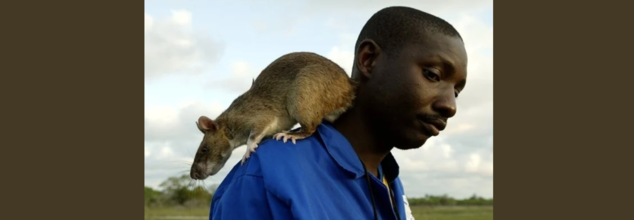- Health Conditions A-Z
- Health & Wellness
- Nutrition
- Fitness
- Health News
- Ayurveda
- Videos
- Medicine A-Z
- Parenting
- Web Stories
Protective Antibodies Fade After COVID-19 Vaccination- Should You Get A Booster Shot?

Credits: Canva
The COVID-19 pandemic might have faded from the news headlines, but for most scientists and international health officials, the debate is not yet through. One of the key questions still keeps cropping up in 2025: How much time do COVID-19 vaccines actually confer immunity, and should we expect to need regular booster doses like the flu?
New evidence indicates the immunity we gain from COVID-19 vaccines—particularly the mRNA varieties—may not be as long-lasting as we had envisioned. Why? Because a so-called long-lived plasma cell has proven to be surprisingly evasive.
Vaccines like the tetanus shot offer robust protection for up to a decade. That’s because they trigger the formation of long-lived plasma cells in the bone marrow—cells that "remember" the pathogen and generate antibodies rapidly if you’re exposed again.
Conversely, COVID-19 vaccines, even though they have been successful in lowering severe disease and hospitalization, appear to come up short in reaching this gold standard of immune memory. A recently published study in Nature Medicine (September 2024) by Dr. F. Eun-Hyung Lee of Emory University explains why protection wanes months after vaccination, even in individuals who received multiple doses and have had prior infections.
The Emory research included 19 healthy adults between the ages of 20 and 65 who had been given two to five doses of mRNA COVID-19 vaccinations. Their bone marrow samples were studied by researchers up to 33 months after the first vaccination using a method known as flow cytometry to identify and examine various forms of antibody-making cells.
What they found was revealing: while the bone marrow had an abundance of short-lived antibody-secreting cells specific to the SARS-CoV-2 virus, the long-lived plasma cells—those responsible for sustained immunity—were nearly absent. Even in individuals who had recently recovered from COVID-19 or received updated booster shots, these long-lived immune defenders remained scarce.
Conversely, the same bone marrow samples had a strong presence of long-lived plasma cells for tetanus and influenza—vaccines with longer-lasting protection. The disparity could be one reason why breakthrough infections still appear relatively soon after COVID-19 vaccination.
How Effective Is The COVID Vaccine?
The Emory results accompany a wider meta-analysis appearing in JAMA Network Open (May 2024), which compared 40 worldwide studies to determine real-world vaccine effectiveness over time. The analysis spanned different waves, such as Delta and Omicron.
Effectiveness against symptomatic COVID-19 was approximately 53% one month following full vaccination.
The highest effectiveness was reported by Moderna's vaccine at 62%, followed by Sinovac's lowest at 32%.
Six months after that, effectiveness fell to 14%, and at nine months, it fell another step to only 9%.
Booster shots restored protection to 60% for a brief time, but that too fell to 13% in nine months.
Those are the numbers that make it plain: both primary series and booster shots provide temporary barriers, but their protection wanes—particularly with the newer, more immune-evading variants of the virus, such as Omicron.
Should You Get a Booster Shot?
The answer is complicated. If you're in a vulnerable group—older people, those with compromised immune systems, or frontline healthcare workers—then yes, booster shots are still a critical line of defense against severe illness and hospitalization. But even for the general population, boosters provide added protection for a limited but important time frame.
What is also important is that which strain the booster aims against. Similar to the flu vaccine, efficacy greatly relies on how closely the vaccine and the prevailing strain align. The FDA is currently collaborating with researchers to define the predominant strain for the next COVID-19 vaccine season—potentially marking the beginning of an annual, strain-specific booster approach.
The holy grail for SARS-CoV-2 vaccine scientists today is how to trigger long-lived plasma cells. Dr. Lee's research implies that existing mRNA platforms might not be the ideal vehicle for it—at least, not yet. But research is exploring new delivery modes, different schedules, and even combination vaccines that could eventually solve the secret to durable COVID-19 immunity.
"Long-lived plasma cells are the secret to enduring protection," according to Dr. Lee. "What our findings indicate is that the existing mRNA vaccines fail to produce them well for COVID-19. More studies are necessary to alter that."
Ways to Build Immunity Naturally
Boosting your immune system naturally can make your body fight off infections and diseases more efficiently. These are easy, evidence-based methods to support immune health:
- Consume a well-balanced diet with leafy vegetables, citrus fruits, berries, garlic, and turmeric.
- Drink lots of water and herbal teas to stay hydrated.
- Exercise frequently with a minimum of 30 minutes of moderate physical activity every day.
- Sleep well (7–8 hours) to enable your body to repair and recharge.
- Reduce stress through meditation, yoga, or conscious breathing.
- Avoid alcohol and smoking, which can compromise immunity.
10 Best Yoga Exercises To Boost Your Vision

Credit: Canva
In an age dominated by screens and digital overload, our eyes are under constant strain—leading to issues like dry eyes, blurry vision, and fatigue. But could simple exercises, rooted in ancient yogic practices, offer relief? Eye yoga, a technique that involves controlled eye movements and relaxation methods, is gaining popularity as a natural way to improve focus, reduce tension, and potentially support better vision.
Best 10 Yoga Eye Exercises
Here are 10 simple but effective eye exercises through yoga:
1. Palming
Rub your hands together until they feel warm, then place them over your closed eyes. This simple exercise helps relax your eye muscles.
2. Blinking
Close and open your eyes quickly for about 10 seconds. This refreshes the eyes and improves moisture levels.
3. Up and Down Eye Movement
Move your eyes up and down slowly without moving your head. This exercise helps in improving flexibility.
4. Side-to-Side Movement
Shift your gaze from the left to the right, without moving your neck. It strengthens the eye muscles responsible for horizontal movement.
5. Diagonals
Move your eyes in diagonal directions—starting from the top left to bottom right, then top right to bottom left.
6. Circular Eye Movements
Roll your eyes in a clockwise and then counter clockwise motion. This exercise helps in enhancing the flexibility of the eye muscles.
7. Focus Shifting
Hold a finger close to your nose, then move it away while focusing on the finger. This improves focus and coordination.
8. Zooming
Focus on your thumb held at arm's length. Slowly move it closer to your face and back again. This strengthens your focus ability.
9. Figure 8
Imagine an infinity symbol in front of you. Trace it with your eyes for about a minute. This exercise improves flexibility and muscle strength.
10. Near and Far Focus
Alternate your gaze between a close object and a far-away object. This improves your eyes' ability to shift focus between varying distances.
Important Tips for Eye Health
Apart from practising these eye exercises to improve vision, it’s essential to follow these additional tips to maintain good eye health:
Maintain a balanced diet rich in vitamins A, C, and E, which are essential for eye health.
Take regular breaks during screen time using the 20-20-20 rule: look at something 20 feet away for 20 seconds every 20 minutes.
Stay hydrated to prevent dry eyes.
Wear UV-protective sunglasses when outdoors to shield your eyes from harmful rays.
Ensure proper lighting while working to avoid straining your eyes in dim light.
Get regular eye check-ups to monitor your eye health and prevent potential problems.
Meet Adam Rainer, The Man Who Was Born A Dwarf, But Grew Into A Giant Due To A Pituitary Gland Tumor

Credits: historicflix
Being extremely short or tall poses countless challenges. From finding suitable clothes and furniture to coping with potential health complications, the impact goes far beyond appearances. For most people, their height remains relatively constant throughout adulthood. But what if someone experienced life both as a dwarf and a giant? That’s exactly what happened to Adam Ranier, the only documented case in history of such a transformation.
Early Years: Living with Dwarfism
Adam Ranier was born in 1899 in Graz, Austria. His parents were of average height, but by his teenage years, it was clear Adam was not growing like other children. By 15, he stood at just 4 feet 6 inches. Curiously, his hands and feet were disproportionately large—he wore a size 10 shoe.
At 18, Adam attempted to enlist in the Austro-Hungarian army during World War I. He was rejected for being too short—the minimum required height was 4 feet 10 inches. He tried again at 19 but still didn't meet the height criteria.
By the age of 21, Adam was still significantly below average height and extremely thin. It seemed he was destined to remain a dwarf for life. Then, something extraordinary happened.
A Mysterious Growth Spurt
Soon after turning 21, Adam began to grow rapidly. His shoe size increased dramatically—by age 23, he wore a size 20. Over the next decade, he grew at an astonishing rate. By 1930, he stood at 7 feet 1 inch tall.
Alarmed, doctors A. Mandl and F. Windholz examined Adam and diagnosed him with acromegaly, a condition caused by a tumor on the pituitary gland that leads to excessive growth hormone production. They recommended surgery to remove the tumor, a risky procedure in the pre-antibiotic era.
In December 1930, Dr. Oscar Hirsch successfully removed the tumor. Although Adam’s growth slowed, it didn’t stop entirely. By 1950, he measured 7 feet 8 inches tall.
Medical Challenges and Resilience
Acromegaly brings numerous complications—heart issues, arthritis, vision problems, and distinct facial changes. By age 25, Adam had hearing loss, and by 30, a severe spinal curvature developed. Despite these challenges, Adam remained functional and kind, according to those who knew him.
He spent his later years in Rottenmann, a quiet Austrian town. After World War II, he moved into a care home but retained his independence.
The End of an Extraordinary Life
In February 1950, Adam suffered a perforated intestine and died shortly after surgery, at the age of 51. Much of what we know about his life comes from Dr. Hirsch’s 1961 report.
Adam Ranier’s story remains one of the rarest medical phenomena. At 20, he was a dwarf; by 30, a giant. While dwarfism is typically caused by a genetic mutation like achondroplasia, and acromegaly by a pituitary tumor, the odds of one person experiencing both are almost incalculable.
Yet Adam did. He stands as the only recorded individual in history to have lived both extremes—a true medical marvel.
How African Rats Help Detect Disease And Save Lives

African Giant Rat (Credits: Rat Forum)
When Carolina retired from her job in November, her colleagues clapped, cheered, and celebrated over cake. Over her seven-year career, she had detected more than 3,000 hidden cases of tuberculosis (TB), preventing an estimated 30,000 additional infections. But Carolina wasn’t a doctor—she was an African giant pouched rat.
Carolina belonged to a team of "HeroRATS" trained by the nonprofit APOPO. These highly intelligent rodents are revolutionizing disease detection across parts of Africa by identifying TB faster and more accurately than traditional methods.
Faster, Smarter Detection
Tuberculosis remains the world’s deadliest infectious disease after COVID-19. In 2023, over 50,000 people died of TB in Tanzania and Ethiopia alone. According to APOPO, rats like Carolina have increased TB detection rates at local clinics by up to 40%, helping catch cases that basic smear microscopy—still widely used in low-resource settings—misses.
While a human lab technician takes up to four days to examine 100 sputum (phlegm) samples, a rat can do it in just 20 minutes. The rats are trained to sniff out volatile organic compounds produced by the Mycobacterium tuberculosis bacteria. Each rat must pass a strict test, identifying 500 samples without missing a single positive case before being certified.
Why Rats?
The African giant pouched rat is no ordinary rodent. With a body longer than a MacBook Air and a tail to match, this species is calm, trainable, and lives 8–10 years in captivity. They have a sense of smell so acute that, according to APOPO’s head of training Cindy Fast, they could detect half a drop of chlorine in 20 Olympic-sized swimming pools.
These rats are motivated by food and trained using positive reinforcement. A clicker and a banana-avocado smoothie help them associate the scent of TB with a treat. Once trained, each rat works just 8–10 minutes a day, five days a week, sniffing out 100 samples at a time.
Real Impact, Real Numbers
According to Dr. Tefera Agizew, a physician and APOPO’s head of tuberculosis, each TB-positive person typically infects 10 to 15 others. By identifying hidden infections, APOPO’s rats helped prevent nearly 400,000 new TB cases in just Tanzania and Ethiopia last year.
Studies have shown that while traditional smear microscopy has a sensitivity rate of only 20–40%, rats can spot positives that are often missed. In some cases, they’ve flagged samples that tested negative even under more advanced lab conditions—suggesting they might even detect TB in its latent stage.
More Than Just TB
APOPO began in the 1990s as a landmine detection project. Rats trained to sniff TNT have been deployed across former war zones. They’re light enough not to trigger mines and accurate enough to save lives. Today, APOPO also explores training rats for wildlife crime detection and search-and-rescue operations.
Yet, despite their proven abilities, rats face a stigma. “People often recoil at the idea of rat diagnosis,” says Agizew, “but once they see how effective and accurate they are, minds start to change.”
A Well-Earned Retirement
When rats like Carolina retire, they’re treated like heroes—with carrot cakes, peanuts, and applause. They live out their days in shaded enclosures, often with companions, enjoying playtime and rest after years of life-saving work.
As Fast puts it, “These rats are our colleagues—and they’re saving lives every day.”
© 2024 Bennett, Coleman & Company Limited

